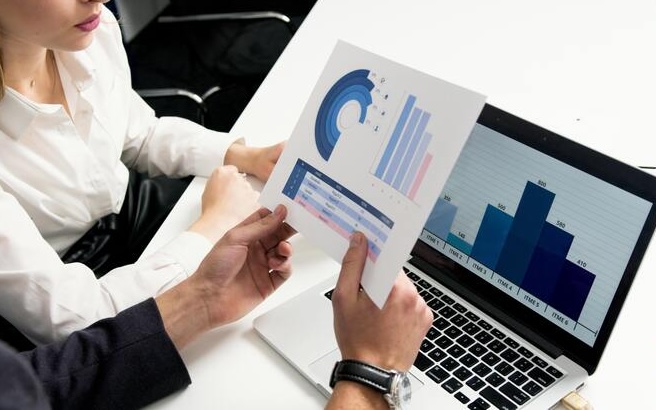Defining and Measuring Reputational Risk
Reputational issues are an inevitable part of public relations work.
These issues exist on a spectrum—some are short-lived and fade away before the next news cycle. In these cases, the best course of action may be to do nothing at all.
However, others have the potential to persist. They carry legal or cultural implications that can inflict significant damage on a brand, or even destroy it.
PR professionals must be able to discern when an issue is merely noise, and when it is an early sign of a potential crisis. Sometimes mere noise can escalate into a full-blown crisis if it’s not properly managed. Your response to any given situation should be proportionate to the potential damage it could cause.

That’s what makes the ability to measure reputational risk so important. Understanding the scope and potential impact of an issue allows you to tailor your response effectively. Your PR team must constantly evaluate all possible ways things could go wrong, and plan accordingly.
Remember, it only becomes a crisis if you haven’t anticipated it first.
Here we’ll explore the nuances of defining and measuring reputational risk, and provide you with tools to better safeguard your brand.
Reputational Risk Defined
Reputational risk is the potential threat or danger of negative public perception that can damage an organization’s credibility, brand image and stakeholder trust.
Components of the Definition
- Potential threat or danger: This is the risk part. Keep in mind that the threat or danger doesn’t have to be certain; as Pepsi learned in 1993, the potential is enough, and it ought to spark action from public relations people.
- Negative public perception: Unfavourable opinions or impressions held by the general public, customers, employees, investors or other stakeholders about your organization can impact your organization’s ability to achieve its objectives. Negative perception can stem from various factors: scandals, controversies, poor product/service quality, unethical practices or mishandling of a crisis.
- Damage to credibility: You need your stakeholders to believe in your organization’s claims, promises and actions. This credibility is the foundation of strong relationships with stakeholders.
- Brand image: It’s been said many times that your brand consists of two parts: what you say it is, and what other people say it is. You control only half of that equation. You must always be alert to anything that could compromise the other half.

Why It Matters
An organization’s reputation is one of its most valuable intangible assets. Damage to organizational reputation can have far-reaching consequences, including financial losses, decreased market share, difficulty in attracting and retaining talent, even legal or regulatory implications.
Effective public relations strategies proactively build and maintain a positive reputation, and can mitigate the impact of any reputational crises that arise.
Building such a reputation is a gradual, sometimes painstaking process. It requires consistent effort, integrity and a commitment to excellence over a long period of time. You earn it by delivering on promises, maintaining ethical practices and fostering trust with stakeholders through transparent and responsible actions.
But damage to a hard-earned reputation can happen much more quickly. Sometimes all it takes is a single misstep, scandal or crisis situation. Information spreads rapidly through social media and digital channels. Negative posts spread faster than positive ones. Fake news spreads faster than real news. A negative incident or allegation can quickly go viral, amplifying public scrutiny and backlash.
Once a reputation is damaged, it’s hard to regain the lost trust and credibility. Perceptions tend to linger. Rebuilding a tarnished reputation takes even more time, resources and effort than building that positive reputation in the first place.
Measuring Reputational Risk
Effectively measuring reputational risk requires both proactive and reactive approaches. Here’s how to manage it:
Proactive Measures (Ongoing Basis)
- Monitor online sentiment and public perception Regularly analyze social media mentions, customer reviews and media coverage to gain valuable insights into how your brand is perceived. Keeping track of news trends and online sentiment provides a real-time understanding of public opinion. This ongoing monitoring helps identify potential issues before they escalate.
- Incorporate qualitative methods Continuously gather insights through interviews, surveys and focus groups. These tools help you understand public perception more deeply and identify potential vulnerabilities. Engaging directly with stakeholders on a regular basis allows you to stay attuned to the sentiments and opinions shaping your organization’s reputation.
- Use SWOT analysis Periodically conduct SWOT analysis (Strengths, Weaknesses, Opportunities, Threats) to systematically evaluate internal and external factors affecting your organization. This proactive approach helps in identifying areas where your brand is strong and areas that may need attention, allowing you to take preventive actions.
Reactive Measures (In Response to Emerging Issues)
- Monitor inbound communications When an issue arises, closely monitor inbound communications, including direct messages and social media interactions. Automated tools like Brandwatch and Hootsuite can help you track mentions, hashtags and trends related to your brand. Understanding the sentiment and feedback in real-time enables you to respond appropriately.
- React quickly to emerging issues Effective monitoring and timely reporting are essential when an issue is emerging. Quick and efficient responses can help mitigate potential damage and manage your company’s reputation effectively. Being prepared to react promptly ensures that you can address and resolve issues before they escalate.
By maintaining a proactive stance through ongoing monitoring and analysis, and being ready to react swiftly when issues arise, you can effectively manage reputational risk.

How to Quantify Reputational Risk
Emerging issues demand constant risk assessment. The level of risk depends largely on what kind of reputational concerns have been stirred, along with the pace at which the issue is developing.
If you can get a handle on both of these, you’ll better understand how much attention to give the issue.
One way to do it is to create an assessment template that uses a matrix to help your team evaluate situations.
The first part of your template should be a scorecard—a table that lists potential reputational concerns in one column, with space in a corresponding column for you to score them. You can use a scale of 1 to 5, with 1 indicating that you aren’t very worried about that particular development, and 5 indicating a high likelihood that it will cause problems.
Examples of reputational concerns you might list here:
- misinformation being spread online
- threat to customers’ health/safety
- potential for legal action against the organization
You can list as many as you want—anything that might apply to your organization as a reputational issue develops. Give each concern a score:
| Reputational Concern | Score |
|---|---|
| Misinformation being spread online | 1 |
| Threat to customers' health or safety | 4 |
| Potential for legal action against the organization | 3 |
| Add other concerns here | ? |
| Add other concerns here | ? |
| Add other concerns here | ? |
A second table should define various levels of urgency, based on how rapidly the issue is developing. For example:
| Non-urgent | Knowledge of the issue remains internal, for now |
| Emerging | Issue is likely to become public within 24-48 hours |
| Public | External audiences are aware of and discussing issue |
| Urgent | Issue is escalating and becoming a widespread topic of public discussion |
Finally, create a table that translates the evaluations from the first two tables into a general course of action or response.
For example, if an issue has no scores higher than a 2 and is emerging, the approach might be: “Closely monitor news and social media; advise leadership.”
If an issue has several 4s and 5s but remains non-urgent, the approach might be: “Convene meeting of leadership and senior communicators to develop issue-management strategy.”
Having these tools templated and socialized within your group can allow for a faster, more organized response when a reputational issue arises.

Future Trends in Reputational Risk Management
Some aspects of reputational risk management are tried and true, and unlikely to change. Still, technology continues to pull the field into interesting new directions. Embrace it!
Here are some future trends to keep an eye on:
Artificial Intelligence (AI) and Machine Learning (ML)
AI won’t make PR professionals redundant, but AI and ML have the potential to revolutionize reputational risk management. These technologies enable analysis of vast amounts of data to predict potential risks, allowing for faster and more informed responses. Predictive analytics can identify patterns and trends, offering insights that can preemptively address issues before they escalate.
AI-Driven Sentiment Analysis
PR professionals can now monitor public opinion in real-time using AI-driven sentiment analysis. This allows for the swift adjustment of strategies to mitigate negative impacts and capitalize on positive trends. By understanding the nuances of public sentiment, organizations can tailor communications more effectively.
Enhanced Data Integration
Future trends point towards more integrated data systems, where PR tools seamlessly connect with other business intelligence platforms. This integration will allow for a more holistic view of reputational risk, combining insights from various sources such as customer feedback, social media and market trends.
Proactive Crisis Management
With advancements in AI and ML, proactive crisis management will become more prevalent. These technologies can simulate potential crises and test response strategies, ensuring that organizations are better prepared for any eventualities.
By embracing these trends and learning as much as you can about them, you can enhance your ability to manage reputational risk effectively, and ensure your organization or clients are resilient and responsive to shifting landscapes.
Receive our newsletter
Sign up below and we’ll be in touch with monthly updates about Broadsight Tracker, along with news and insights to keep you on the cutting edge of communications work in an AI era.

